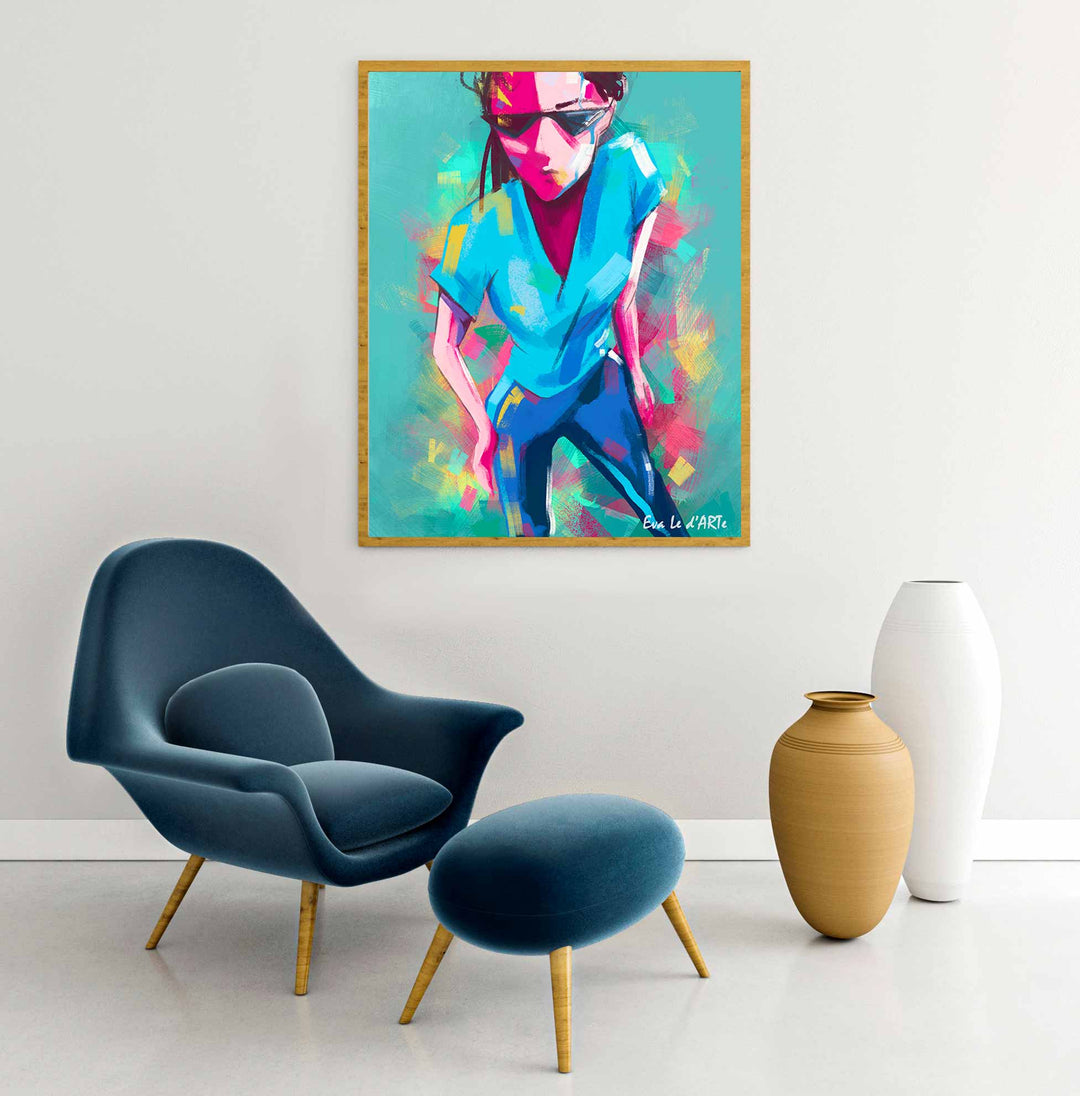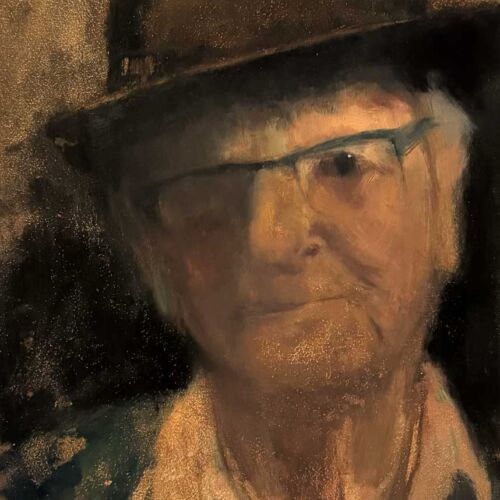How Figurative Oil Painting Transforms Conventional Artistic Expression
How Figurative Oil Painting Transforms Conventional Artistic Expression
Blog Article
The Evolution of Figurative Oil Paint: Comprehending Its Historical Importance and Modern Interpretations
The evolution of metaphorical oil painting serves as an engaging lens with which to examine the interplay in between creative expression and historic context. Contemporary artists, attracting from this rich heritage, are now reinterpreting the human number in ways that test traditional stories.
Beginnings of Figurative Oil Paint
The origins of figurative oil paint can be traced back to the very early Renaissance in Europe, specifically in the 15th century. This period noted a significant departure from the inflexible forms and level depictions characteristic of middle ages art. Artists began to discover naturalism, emphasizing the human figure and its psychological expression. The growth of oil paint permitted higher deepness of shade and detail, improving the realistic look and vibrancy of their job.

In this transformative period, numbers were usually shown within contextually abundant atmospheres, showcasing not only their physical characteristics but also their mental states. Leaders such as Jan van Eyck and Titian used the tool's flexibility, employing layering techniques to attain luminance and structure. This development helped with the representation of detailed materials and the subtleties of complexion, adding to the growth of portrait and narrative scenes.
Moreover, the Renaissance emphasis on humanism fostered an admiration for distinctiveness, which consequently affected musicians to create even more relatable and dynamic numbers - figurative oil painting. Therefore, metaphorical oil painting arised as a powerful lorry for storytelling and emotional interaction, preparing for future imaginative motions and designs
Secret Historic Motions
Substantial historical activities have formed the evolution of metaphorical oil painting, each adding distinct ideologies and methods that increased the medium's opportunities. The Renaissance marked a zero hour, highlighting realistic look and the human type, with musicians like Leonardo da Vinci and Michelangelo pushing the limits of physiological accuracy and viewpoint. Following this, the Baroque era brought significant contrasts of light and shadow, exhibited by Caravaggio, who infused spiritual themes with intense emotionality.
The 19th century presented Romanticism and Realistic look, where artists such as Delacroix and Courbet challenged timeless ideals, focusing on specific expression and day-to-day life. The introduction of Impressionism additionally revolutionized the medium by highlighting the results of light and shade, resulting in a separation from standard depiction.
In the early 20th century, movements like Expressionism and Cubism redefined figurative paint via abstraction and the expedition of emotional depth. Each of these motions not just showed the social adjustments of their times but also prepared for contemporary analyses. The interaction in between these historic activities has actually created a rich tapestry of styles and approaches, influencing modern artists in their pursuit of capturing the human experience on canvas.
Methods and Materials Development

Throughout the Baroque period, strategies such as chiaroscuro and sfumato emerged, enhancing the psychological resonance of metaphorical compositions. Musicians began to trying out glazes and impasto, adjusting structure and luminosity. By the 19th century, technologies like the use of pre-mixed paints in tubes revolutionized access, enabling musicians to paint en plein air and record the fleeting impacts of light.
The 20th century witnessed the introduction of artificial pigments and mediums, which increased the palette and changed the uniformity of oil paints. Additionally, the expedition of new application methods, such as palette knives and brushes of differing stiffness, additional varied artistic expression. Collectively, these innovations reflect the developing partnership in between materials, methods, and the imaginative vision inherent in figurative oil painting.

Contemporary Analyses
Contemporary analyses of metaphorical oil paint mirror a vibrant discussion in between practice and technology, where musicians test developed standards and discover varied motifs. click this This evolution manifests in various ways, as contemporary musicians mix timeless strategies with modern-day principles, usually addressing social, political, and individual stories.
Several experts attract ideas from historic works, yet they infuse their pieces with modern viewpoints, making use of the human kind as an automobile for discourse on gender, identity, and culture. Artists significantly trying out abstraction, distortion, and multimedias, which permits a broader analysis of the number and its context.
Furthermore, making use of dazzling shade palettes and unconventional make-ups typically serves to interfere with standard seeing experiences, prompting important engagement have a peek at this website from target markets. This shift in emphasis prolongs beyond aesthetics; it shows a growing recognition of the complexities of human experience in an interconnected globe.
As figurative oil paint continues to advance, it stays an essential medium for discovering the nuances of modern life, embodying both a regard for heritage and a dedication to modern idea. The result is an abundant tapestry of expression that resonates with the complexities of the modern-day human condition.
Effect On Modern Art
The impact of figurative oil paint on modern-day art is profound, as it has consistently inspired a myriad of artistic motions and techniques throughout the 20th and 21st centuries. From Expressionism to Surrealism and beyond, the expedition of the human number has remained a central style, permitting musicians to convey complex emotions and stories. This focus on figurative representation has caused a re-examination of typical strategies, resulting in innovative methods that blend realistic look with abstraction.
In addition, contemporary artists have welcomed figurative oil painting as a way to deal with social and political issues, using the medium to challenge understandings of identity, gender, and culture. The renewal of rate of interest in figurative work in recent years reflects a longing for link in a significantly electronic world, where human experience and emotion are critical.
Additionally, the discussion in between metaphorical oil painting and modern art is evident in the jobs of musicians such as Kehinde Wiley and Jenny Saville, who draw on historic referrals while infusing their pieces with modern significance. Eventually, figurative oil paint continues to shape and redefine modern-day imaginative expression, highlighting its enduring value in the art globe.
Conclusion
The evolution of metaphorical oil painting emphasizes its historic importance and flexibility throughout various imaginative motions. From the naturalism of the Renaissance to the emotive expressions of the Baroque and the cutting-edge methods of modernity, this tool has actually continually changed. Contemporary interpretations mirror unconventional structures and vibrant shades, fostering essential interaction with political and social styles. Inevitably, figurative oil paint remains an essential medium for checking out the human experience, resonating exceptionally in today's electronic landscape.
The evolution of metaphorical oil paint offers as a compelling lens with which to check see this out the interplay between creative expression and historic context.Substantial historical motions have actually formed the advancement of figurative oil painting, each contributing special ideologies and techniques that broadened the medium's opportunities.As historic activities formed the trajectory of metaphorical oil painting, the materials and methods utilized by musicians have actually additionally undertaken significant transformations. figurative oil painting.The impact of figurative oil painting on contemporary art is profound, as it has continuously influenced a myriad of artistic activities and practices throughout the 20th and 21st centuries.The evolution of figurative oil painting underscores its historical significance and adaptability throughout numerous imaginative activities
Report this page